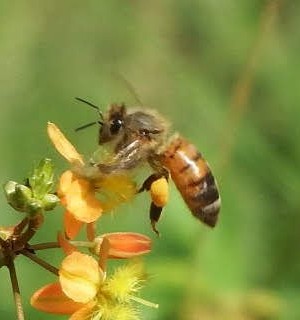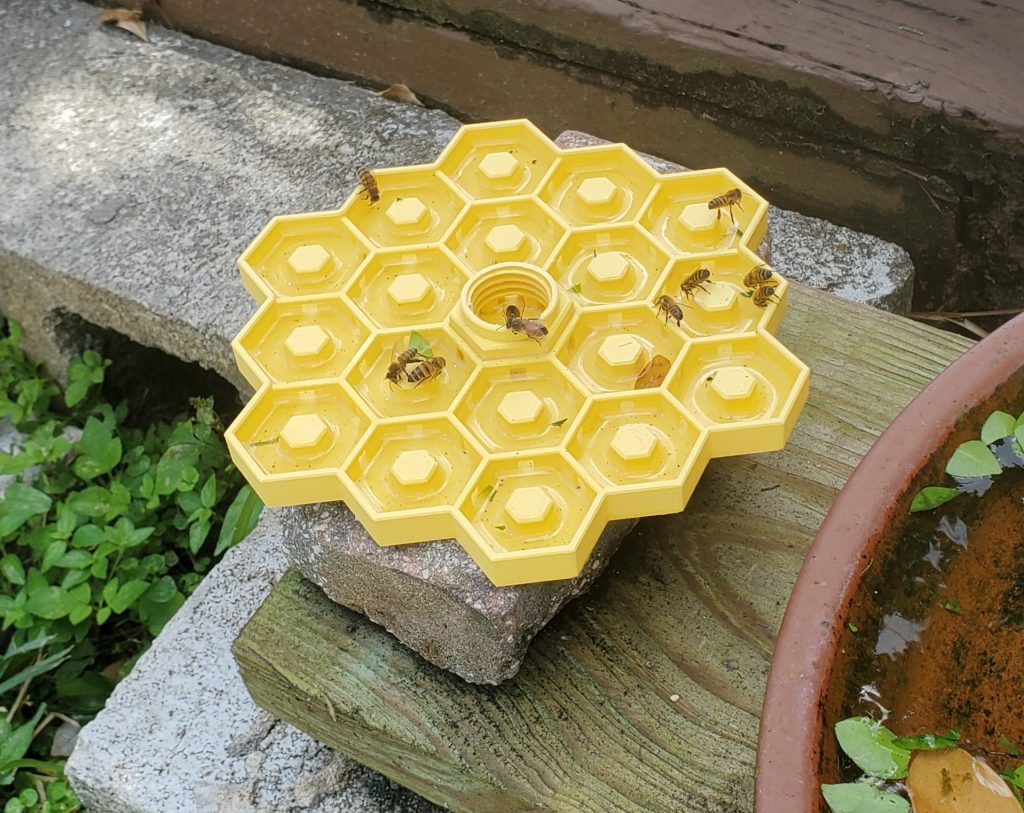You can help bees in so many ways! A great way is to attend one of my workshops/classes – you’ll learn a LOT about honey bees in general AND the incredible, edible world of honey. Visit my “Events” page to see where my next event is. https://weloveourbees.com/events-calendar/
- WHAT DO YOU DO IF YOU SEE A TIRED BEE LYING ON THE GROUND? MIX WHITE SUGAR 1:1 RATIO AND PUT A DROP NEAR HER TO GIVE HER ENERGY. DON’T GIVE HER HONEY UNLESS YOUR HONEY IS FROM A TRUSTED LOCAL SOURCE, RAW AND COMPLETELY UNTREATED. I sell amazing BEE REVIVAL KITS TOO – $15 each plus shipping – it’s a tiny vial filled with sugar water that you carry on your key chain, so if you see a tired bee, you can open it up and offer her some sugar water. The amazing company Beevive in the UK makes these! You can purchase directly from them too at https://www.beevive.com/
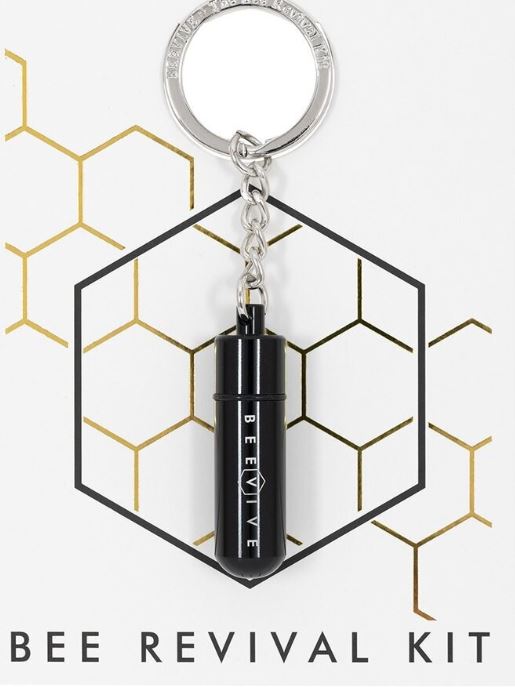
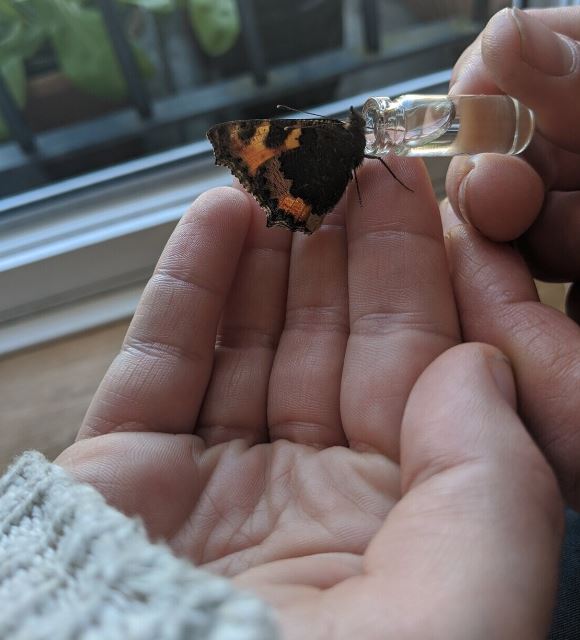
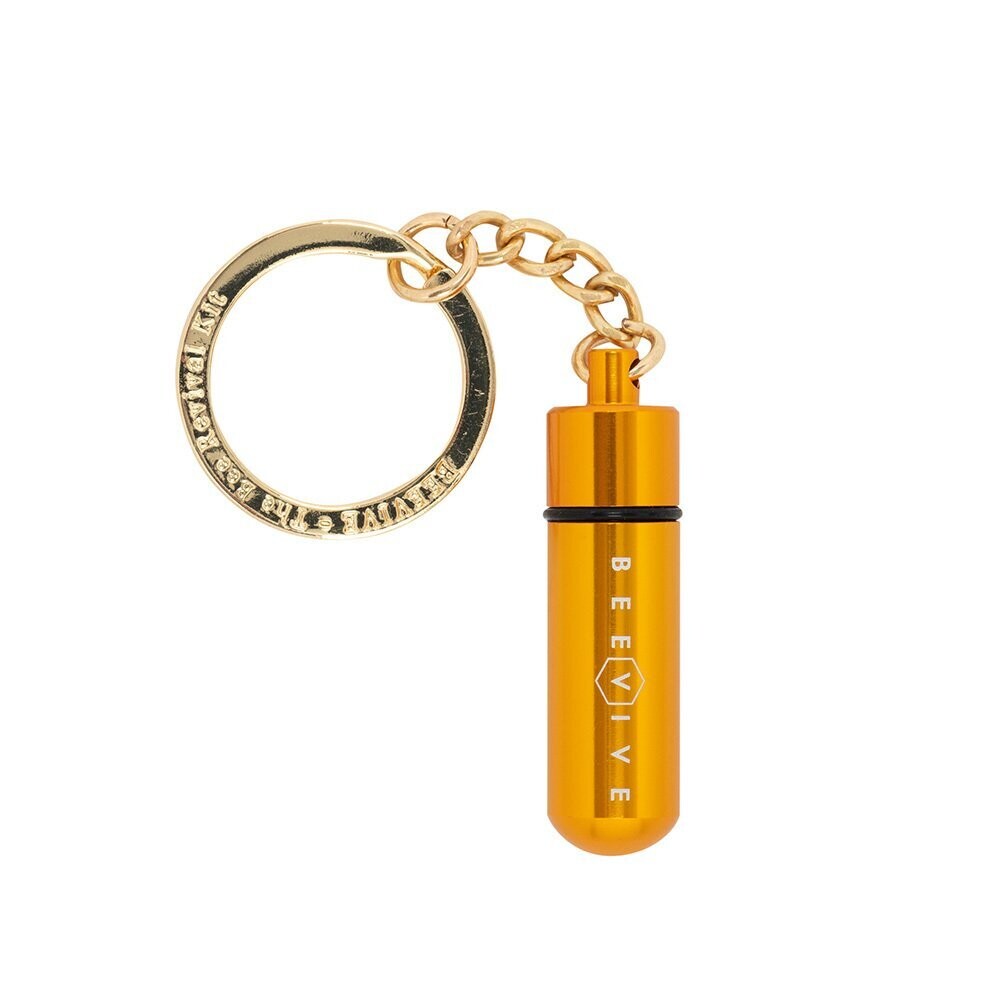
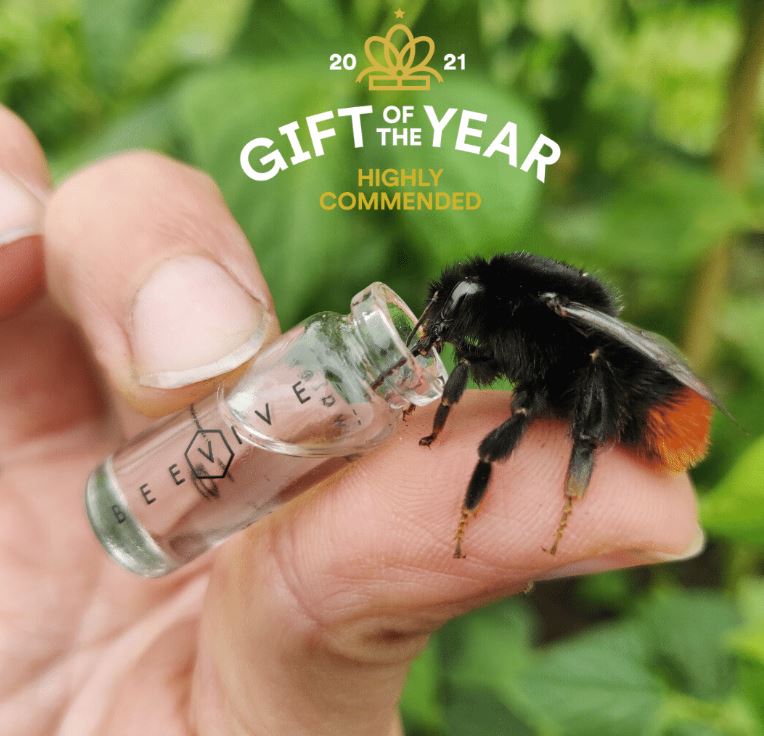
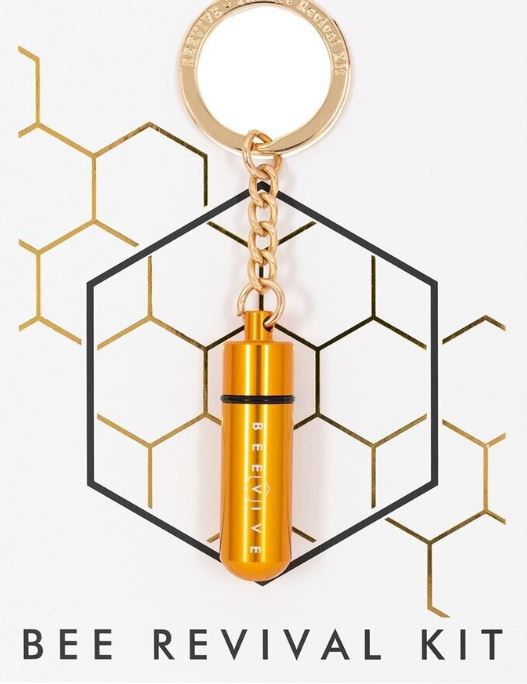
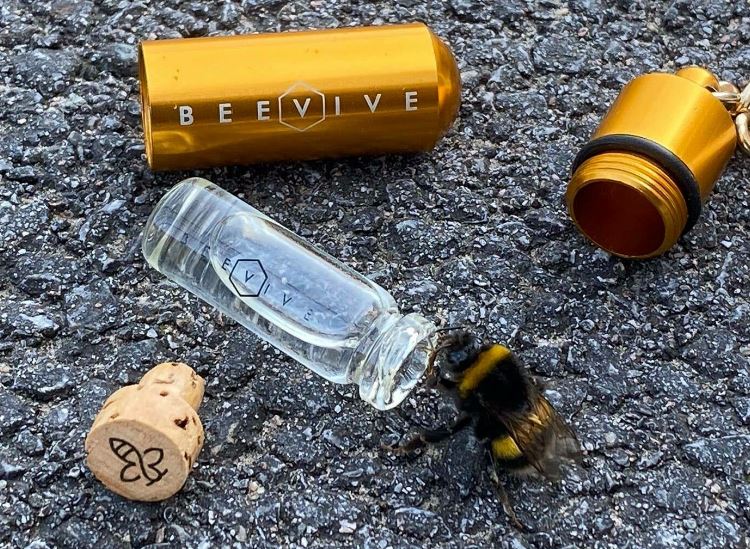
AND WHAT IF YOU SEE A BEE STRUGGLING IN YOUR POOL? WHAT TO DO THEN? USE A SCOOP OR LEAF TO LIFT HER OUT. Don’t use your hands – in her confusion and exhaustion, she may feel threatened and try to sting you, so always use something to lift her out.
2. WHAT ELSE CAN YOU DO TO HELP BEES?
a). PLANT A BEE GARDEN (Pollinator Garden)- you can find out more at my other page https://weloveourbees.com/create-a-pollinator-garden/ which is full of helpful information!
You don’t need a ton of space to grow bee-friendly plants — gardens can be established across yards and in window boxes, flower pots, and planters. PLANT BEE AND BUTTERFLY FRIENDLY FLOWERS AND PLANTS. How do you know which flowers to get? EASY! Go to your local nursery (make sure they do NOT spray their plants – ask before you buy – if they do spray, then go somewhere else. You don’t want toxic flowers in your garden, poisoning the bees and butterflies). When you know that it’s safe to buy from that nursery, just go and watch the flowers. Where you see activity – those are the flowers to get! It’s like if you had a choice between 4 or 5 restaurants – you see that all of them are completely empty except one – and that one is crowded – so you know WOW, THAT’s the place to go for dinner! Same with bees – if they’re digging a certain flower or tree – get it! I get my plants from Jesse Durko Nursery https://www.facebook.com/JesseDurkosNursery/ as they are a no-spray nursery.
b) PLANTS: MOST IMPORTANT: TRY TO GET PLANTS THAT FLOWER AT DIFFERENT TIMES SO BEES ALWAYS HAVE OPTIONS AND PROVIDE TREES FOR BEES – Did you know that bees get most of their nectar from trees? With deforestation and development it’s getting harder and harder for them. When a tree blooms, it provides hundreds — if not thousands — of blossoms to feed from. Trees are not only a great food source for bees, but also an essential habitat. Tree leaves and resin provide nesting material for bees, while natural wood cavities make excellent shelters. Again, visit my page https://weloveourbees.com/create-a-pollinator-garden/
c) GO CHEMICAL FREE – pesticides, fertilizers, herbicides, and neonicotinoids are harmful to bees – avoid treating your garden and green spaces with synthetics. Instead, use organic products or granules on your lawn if you have to for weeds – but bear in mind, bees love clover, so you’re often killing one of their favorite food sources – mention thousands of dead bees by the hive – due to some chemical spraying. We stopped treating our lawns about 6 years ago – all we do is water them – not a single chemical goes anywhere in our garden – we are completely chemical free – and our lawn has NEVER looked better!!!!!
d) CHEMICALS TO BE AWARE OF: Below this article is more valuable information about the terrible effects of chemicals, specifically Glyphosate – this information was provided to me by Samuel Levin | Outreach Coordinator of Drugwatch.com (thank you).
Glyphosate, the active ingredient in Roundup, is one of the most commonly used herbicides in the world by commercial gardeners. However, many pesticides – including insecticides, fungicides, and herbicides – harm pollinators and other beneficial insects.
To help educate those in the farming and gardening industries about this toxic chemical, we’ve created a comprehensive guide with organic, and homemade; and a second guide with agricultural alternatives. please take a look:
https://www.drugwatch.com/roundup/glyphosate/
https://www.drugwatch.com/roundup/cancer/
VERY HELPFUL AND DARE I SAY ABSOLUTELY CRITICAL AND URGENT/ESSENTIAL INFORMATION FOR US TO BE AWARE OF.
3. Encourage LIVE removals instead of extermination – (BRIAN SCHAFER IS THE LIVE BEE REMOVAL SPECIALIST I ALWAYS RECOMMEND – IF YOU NEED BEES REMOVED ALIVE AND YOU’RE IN SOUTH FLORIDA, PLEASE TEXT HIM AT (9 5 4 ) 6 1 2 – 3 6 6 2 – he’s a wonderful live bee removal specialist)
- If you have bees somewhere and you want them gone, remember, they’ve done nothing wrong except believe they’ve found a safe home there – insist on a live removal. Do NOT get an exterminator, no matter what.
- if you know anyone who has bees and wants them removed, contact a LIVE bee removal specialist. Does not have to be us, but it must be someone who is a licensed bee keeper, someone who has an apiary somewhere, who will look after the bees and inspect them regularly.
- When calling someone, make sure they’re not just going to exterminate the bees – ask them WHERE THEY WILL KEEP THE BEES – IF THEY SAY THEY DON’T KNOW, OR CANNOT ANSWER THAT QUESTION, THEN THEY DO NOT INTEND TO REMOVE THE BEES ALIVE. BEES NEED A “FOREVER HOME” TO BE MOVED TO.
- The cost for extermination vs live removal is very similar, although an exterminator only takes 10 minutes to wipe out 100,000 bees, whereas it takes anywhere from 2 hours to 8 hours to do a live removal, plus another visit after dark to remove the new hive and take it to the bee sanctuary, and then another visit two days later to release the queen – it’s 100 times more work than an exterminator – plus we’re working in bee suits in mid summer, sweltering, sometimes getting stung, hanging upside down from something or squeezing through a tiny hole in a wall somewhere – sometimes needing a contractor and loud equipment to break open a wall, or scaffolding or ladders – it’s not easy. It is SO WORTH IT! To get them removed alive rather than killed in a cowardly manner. Recently someone said they were quoted $480 for a live bee removal. The “live bee removal” person showed up, no hive with him, no equipment other than exterminating equipment – when asked where is your equipment, he said “they’re africanized, very dangerous, must kill them.” The next question was “Well, you showed up without any equipment, how did you KNOW ahead of time that these would be dangerous bees? You couldn’t POSSIBLY have known!” Of course there was no response, it was just a trick exterminators use frequently to scare the home owner – the home owner sent him packing but was still presented with a bill for $480 for giving an estimate. Absolutely awful experience! Thankfully that person called us, we went and looked at these “dangerous killer bees” which were as sweet and gentle as could be – and we did the removal! SO PLEASE MAKE SURE THE PERSON SHOWS UP WITH A BEE HIVE AND EQUIPMENT TO RELOCATE THE BEES!
- WHAT IS INVOLVED WITH LIVE BEE REMOVAL: access to the bees (which can be difficult enough): Remove the comb with honey, eggs, brood, (an option is to put it into empty frames secured with rubber bands, and put into the new hive so they have some resources, although this can also transfer any comb defects or hive beetles or wax moths), find the queen and secure her in a queen clip and put her into the hive, then put all bees in there, clean out the area so no remaining honey left behind to attract ants/roaches etc. then leave till after dark when foragers are home, so it’s another trip to the location after dark to take the bee hive to the sanctuary, and then two days later, when they’re all settled, go and release the queen – very complex when done right – compare us to exterminators that show up, spray for a few minutes, scoop out the bees and toss them in the trash, and that’s it – and exterminators charge a lot of money for this. AND we’ve known exterminators to give the home owner the honeycomb after spraying, which means the comb is covered with toxic spray.
I know one person who had bees living under her garden shed. They had been there for years – was a huge colony, very gentle, but she hadn’t known they were there because there was a tree in front of the shed. When the tree was cut down and she saw the bees, she immediately wanted them removed because she was scared they were going to “attack” her. I pointed out that they’d never bothered her before and just because she now knew they were there, they STILL wouldn’t bother her. And they didn’t. If that tree hadn’t been removed, she’d never have known they were there, going quietly and gently about their business – totally innocent. Just being aware that they were there made her afraid when she shouldn’t have been. The bees never bothered her before the tree was removed, so why would they bother her now? Hard to explain but a lot of people get afraid when they see a bee – even if the bee isn’t bothering them and has no interest in anything other than nectar and pollen.
4. CREATE A BEE BATH
Bees work up quite thirst foraging and collecting nectar and also need water to keep their hives cool. Fill a shallow bird bath or bowl with clean water, and arrange pebbles and stones inside so that they break the water’s surface. Bees will land on the stones and pebbles to take a long, refreshing drink. I LOVE Trevor’s designs and 3D printed Bee pods, spas and watering stations, you can buy directly from him through Numonday – Trevor is awesome! https://www.numonday.com/product/the-beespar-self-refilling-bee-water-station-3d-printed/ The idea of the Bee Spa is to be able to put a bottle of water in there so the “spa” keeps replinishing itself. Ideal for hot Florida weather. BEES NEED WATER DESPERATELY!
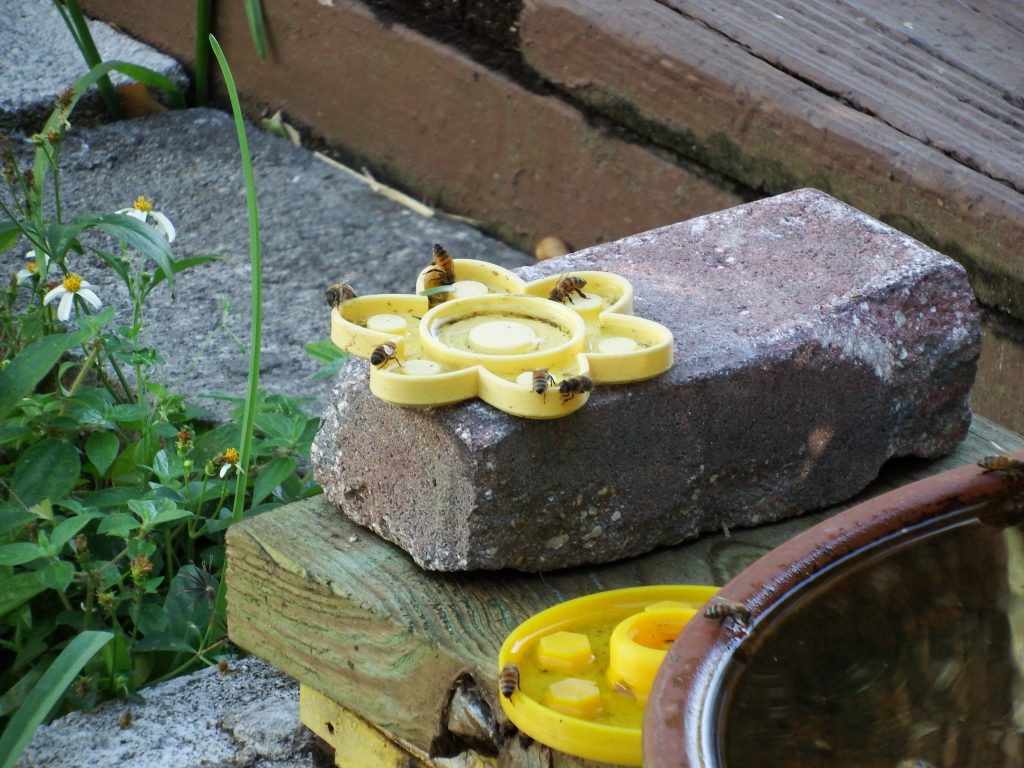
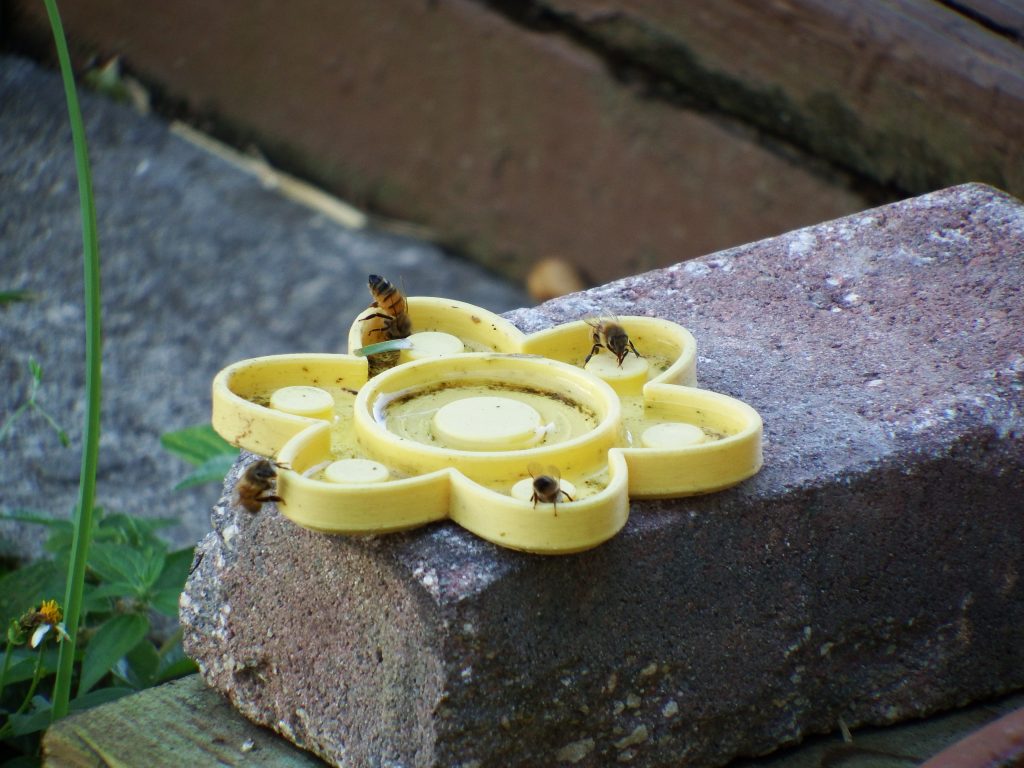
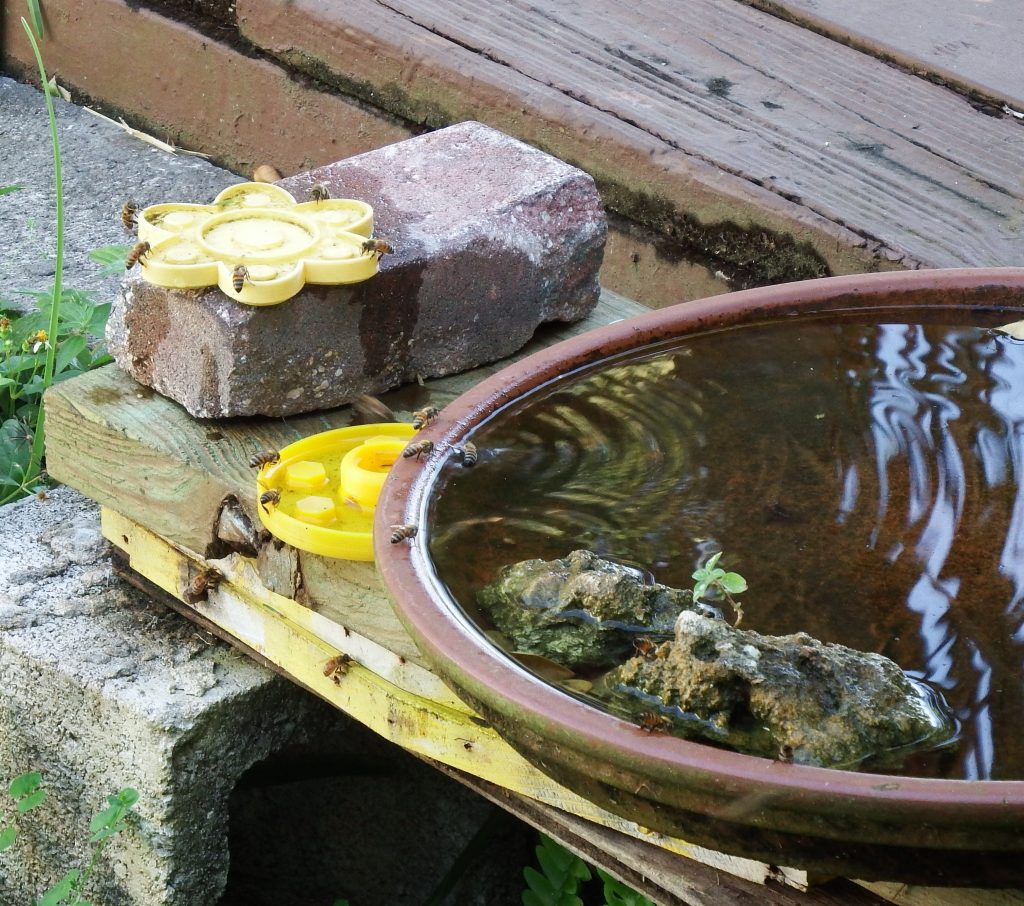
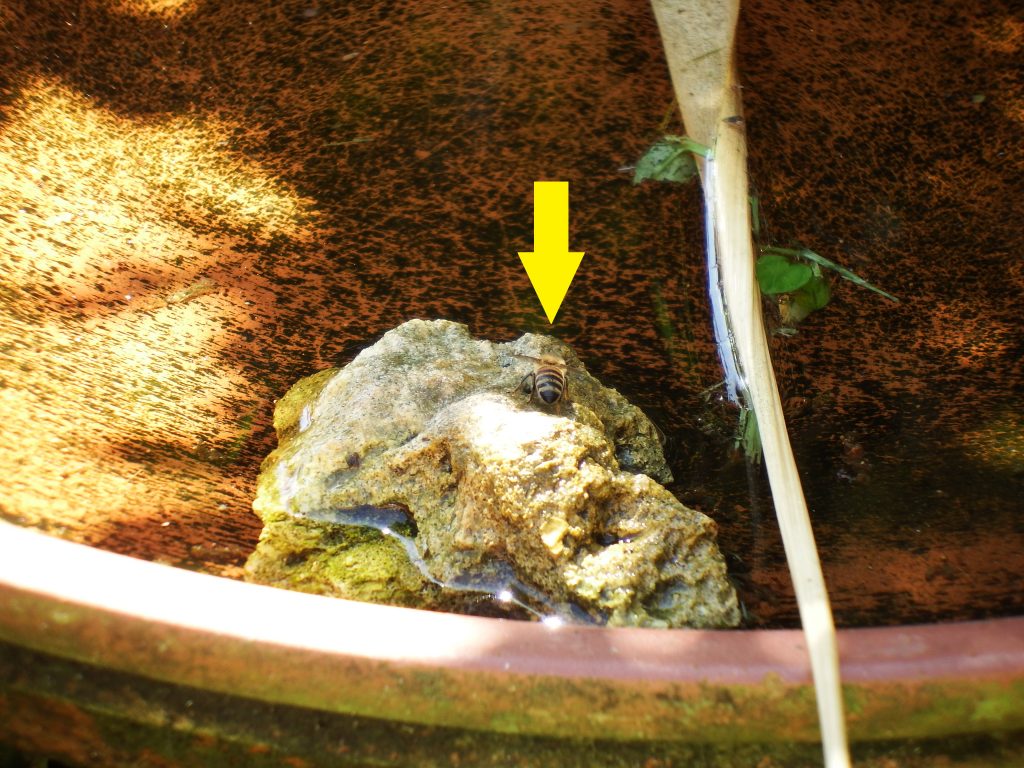
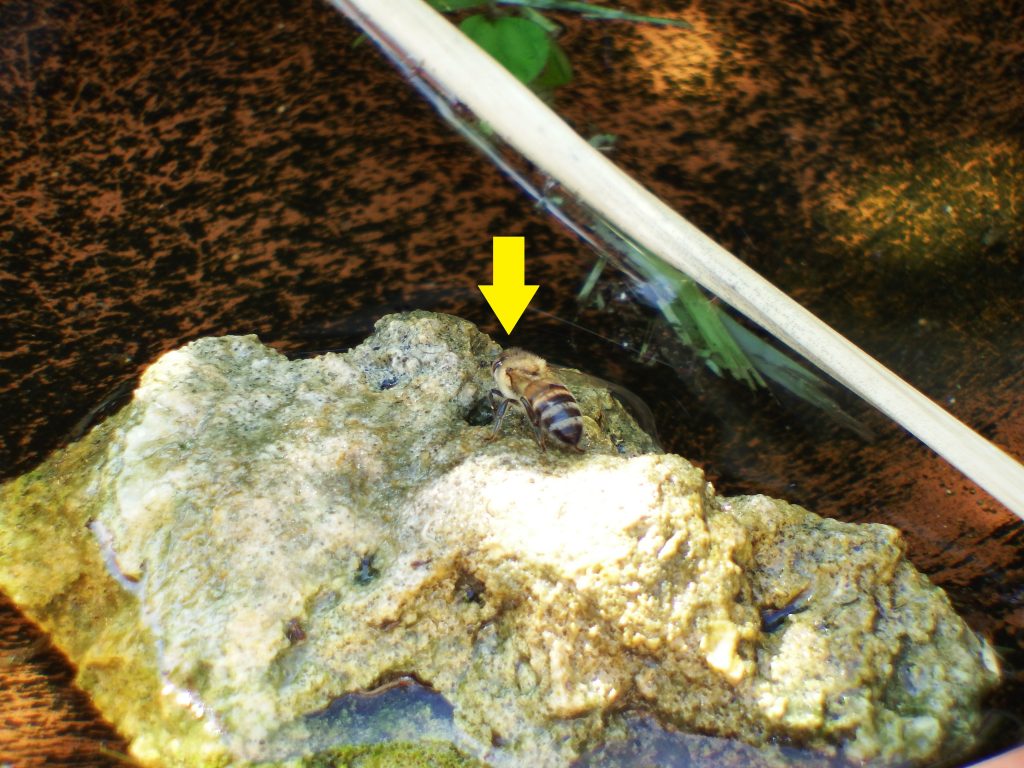
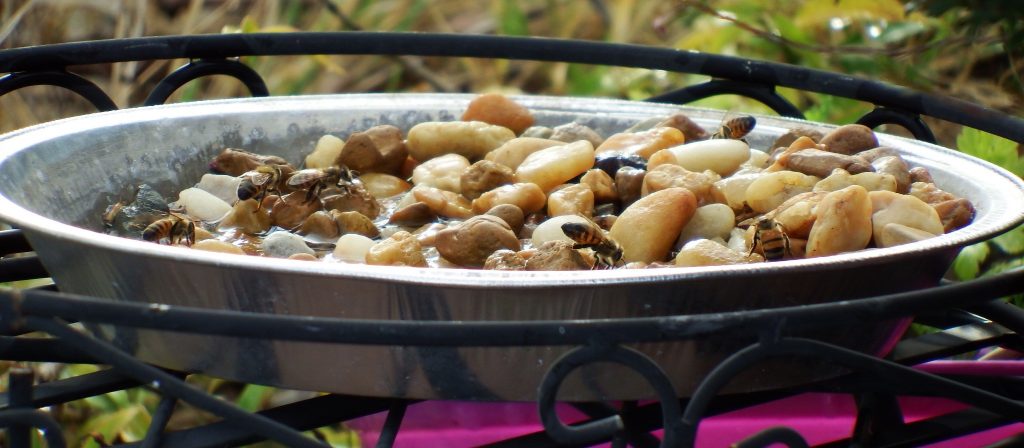
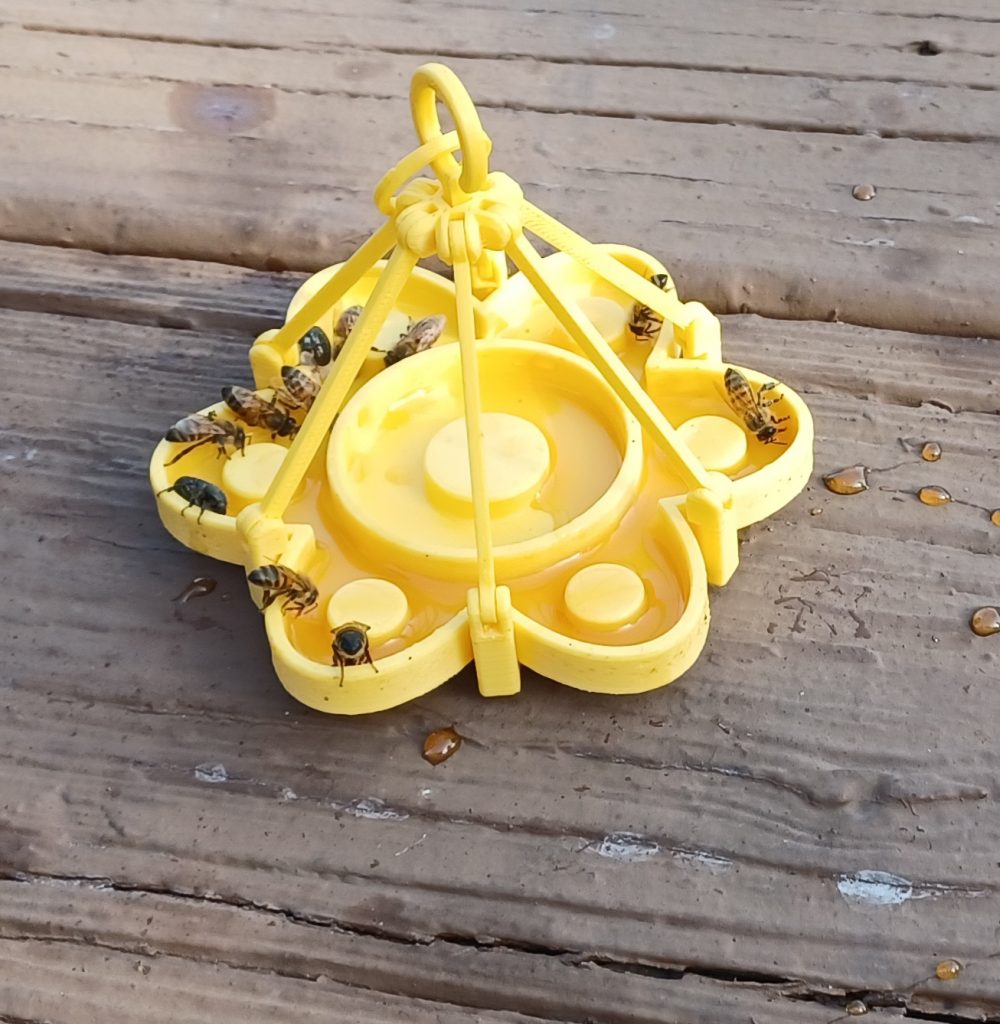
5). MAKE A DONATION – What do we use the money for? Buying bee equipment, SPECIFICALLY NEW BEE HIVES FOR BEE REMOVALS – donations allow us to do bee rescues in low income housing situations, or when bees are living in abandoned buildings that are about to be demolished, or critical situations. Our main priority is to save the bees, so if the home owner can’t afford it, or if there is nobody there to sanction the removal but we need to save the bees anyway, we need to get the funds from somewhere to cover our costs. Let me know if you’re interested in donating towards bee equipment! We LOVE South Florida Bee Supplies, https://www.sflbeesupplies.com/ and they have a section where you can purchase a gift card (so we can buy equipment) – https://www.sflbeesupplies.com/store/p182/giftcertificates.html and you can use my email address as the recipient which is saveourhoneybees@yahoo.com and I will make sure that all equipment is used for live bee removals, in association with my favorite beekeeper and live bee removal specialist in the world, Brian Schafer.
6) BUY MY HONEY – My honey is raw, unprocessed, very lightly filtered, wildflower, and great for seasonal allergies because it’s local. All proceeds go to saving the bees (equipment etc.). I am in Fort Lauderdale, Florida, USA.
7) If you’re a little nervous about honey bees, you can help other bees by buying an Insect hotel or Bee hotel! Visit https://crownbees.com/ for more information – they are FANTASTIC! They will guide you in how to help our solitary bees – also great pollinators. Alternatively, visit the section on ORCHID BEES – you will love these shy, gentle, sweet little bees that gather around my Orchid Bee Feeders to gather clove oil (the males rub it on their legs to attract the ladies.) https://weloveourbees.com/orchid-bees/
DO WHAT YOU CAN TO SAVE THE BEES. THEY ARE OUR GREATEST FRIENDS, OUR BIGGEST ALLIES, THEY WORK FOR US AND ALL THEY WANT FROM US IS TO BE LEFT ALONE. REMEMBER, IT’S NOT WHAT THE BEES CAN DO FOR YOU, BUT WHAT YOU CAN DO FOR THE BEES.
